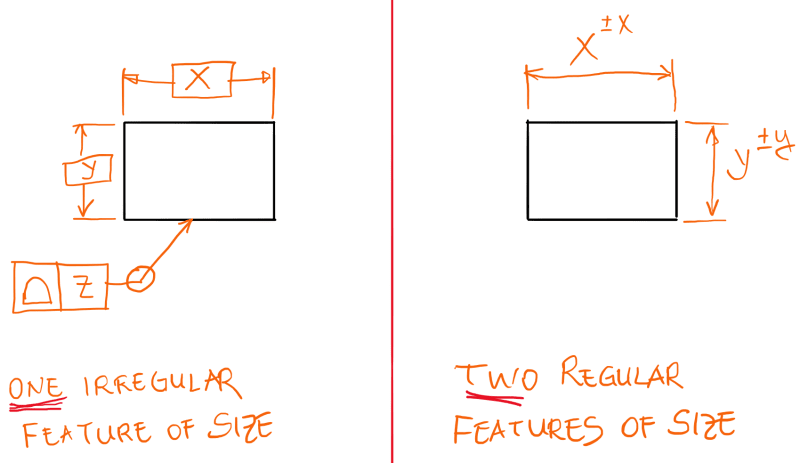superptrucker
Automotive
- Feb 21, 2017
- 15
In "The Ultimate GD&T Pocket Guide, 2nd Edition" by Alex Krulikowski, on page 13 there is a table that distinguishes Regular vs Irregular features of size. One distinguishing feature is "May Be Defined With Basic Dimensions and Profile" and it shows No for Regular FOS, and Yes for Irregular FOS. I am having a hard time understanding the meaning of this. Can anyone clarify? Thanks in advance.

